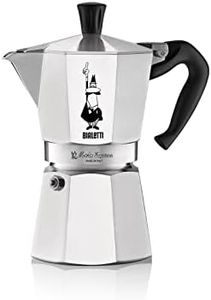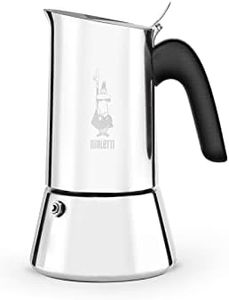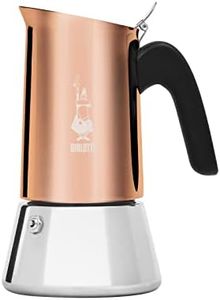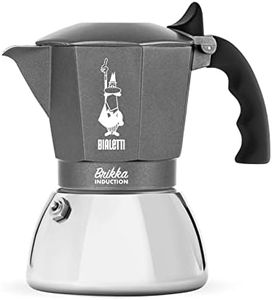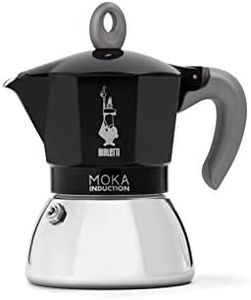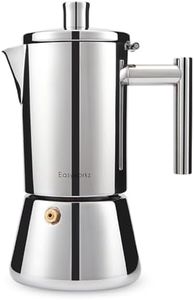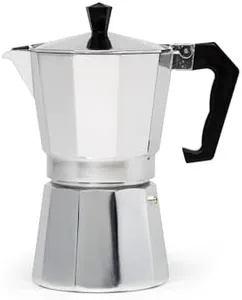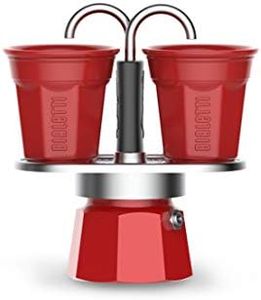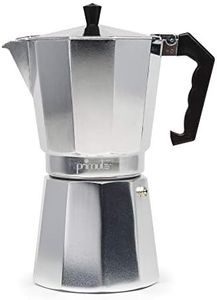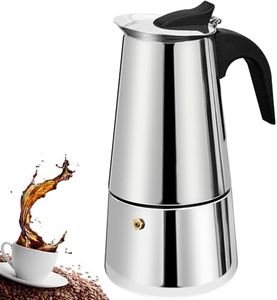We Use CookiesWe use cookies to enhance the security, performance,
functionality and for analytical and promotional activities. By continuing to browse this site you
are agreeing to our privacy policy
10 Best Stovetop Espresso Makers
From leading brands and best sellers available on the web.Buying Guide for the Best Stovetop Espresso Makers
Choosing a stovetop espresso maker, also known as a moka pot, is all about matching the device to your coffee preferences, kitchen habits, and household size. These classic brewers are prized for delivering rich, strong coffee without needing electricity or complex techniques. It’s important to focus on aspects like size, material, and safety features to ensure you enjoy both the process and the coffee itself. Think about how much coffee you typically need at once, what kind of stovetop you have, and how easy you want cleaning and maintenance to be.CapacityCapacity refers to how much coffee the stovetop espresso maker can brew in one go, usually measured in 'cups.' However, in this context, a 'cup' is a small espresso shot — not a standard mug. Sizes often range from 1-cup makers, perfect for solo drinkers or testers, up to 12-cup versions suitable for a group or heavy coffee drinkers. If you mostly make coffee for yourself, a smaller model saves space and heats up quickly. For couples or families, go bigger to avoid running multiple brews.
Material (Aluminum vs. Stainless Steel)Stovetop espresso makers are typically made from either aluminum or stainless steel. Aluminum pots are traditional, lightweight, and heat up quickly, but can discolor over time and are not dishwasher safe. Stainless steel models are more durable, easy to clean, and work with induction stovetops, but they take slightly longer to heat. Pick aluminum for classic feel and fast results if you don’t mind hand-washing. Choose stainless steel for durability, easy maintenance, and if you have an induction stove.
Stovetop CompatibilityNot all moka pots work with every kind of stove. Aluminum models generally work on gas and electric burners, but not induction. Stainless steel generally works with all types, including induction. If you have an induction stove or plan to switch in the future, make sure your espresso maker is compatible, or look for models with a magnetic base.
Ease of CleaningSome stovetop espresso makers are easier to clean than others. Aluminum ones usually require hand-washing with water only to preserve the material, while stainless steel models can often go in the dishwasher. Simpler designs with fewer parts are less fussy and easier to keep clean. If you want low maintenance, opt for straightforward construction and consider stainless steel.
Safety FeaturesPressure valves and heat-resistant handles are common safety features on moka pots. The pressure valve prevents excess steam build-up, reducing risk of accidents. Cool-touch handles make it safer to pour after brewing. Always check that your chosen model has a visible, well-made pressure valve, and if you’re concerned about burns, prioritize models with insulated handles.
Spout DesignThe spout shape affects how easily and cleanly you can pour your coffee. Wider, well-defined spouts help prevent spills, especially when transferring coffee into small cups. If precision matters to you or you want to avoid drips, pay attention to the spout’s width and angle in the product description or images.
